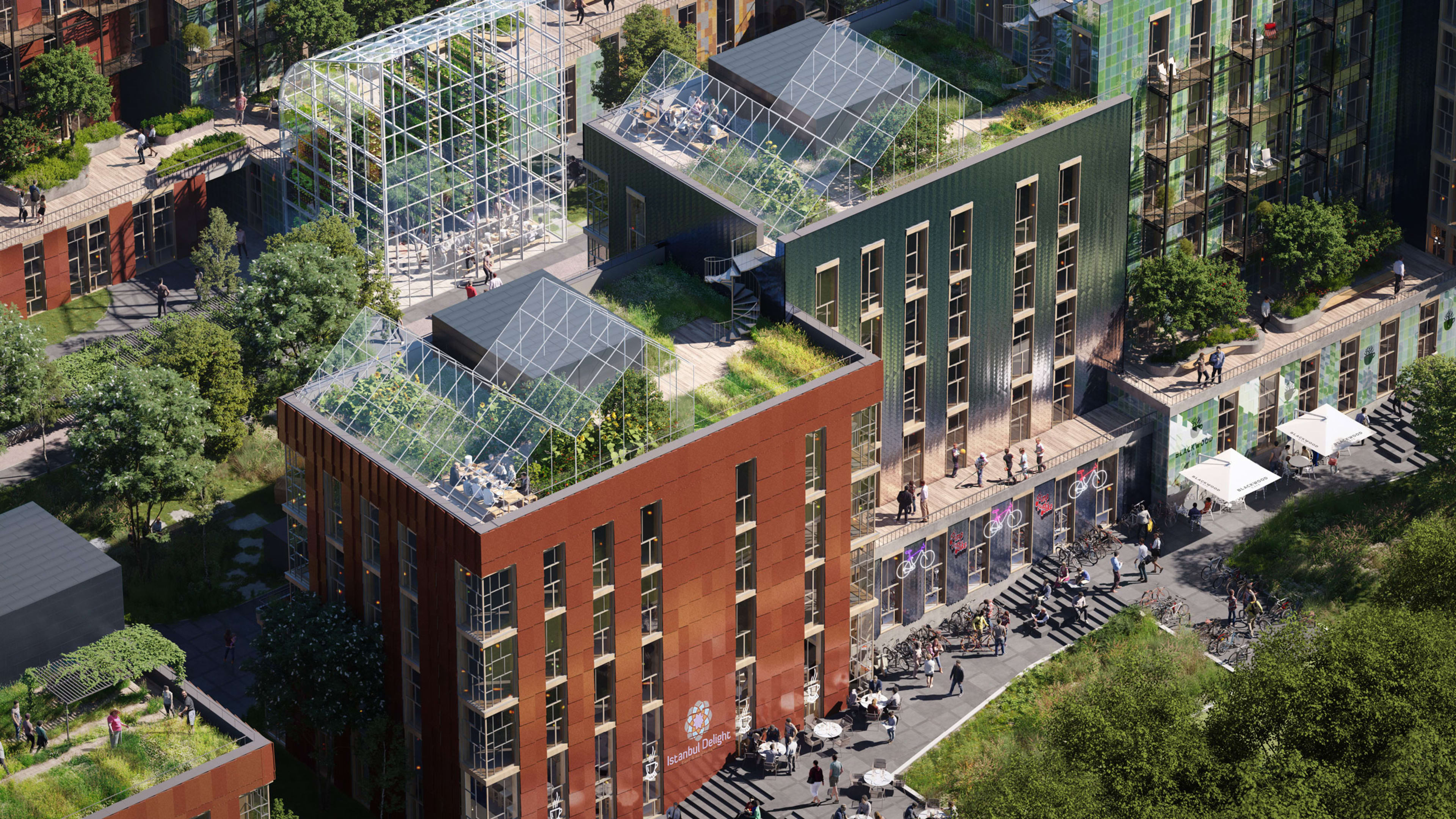As the world moves to a zero-carbon future, cities will be key places to transform–particularly buildings, which account for more than half of emissions in most cities. Reinventing Cities, a competition launched two years ago by C40 Cities, a network of mayors focused on finding solutions to climate change, asked architects to reimagine new uses for vacant and abandoned spaces in six cities: Chicago, Madrid, Milan, Paris, Oslo, and Reykjavík. These are the winning proposals; the winning teams now have the chance to buy or lease each site to develop the projects.
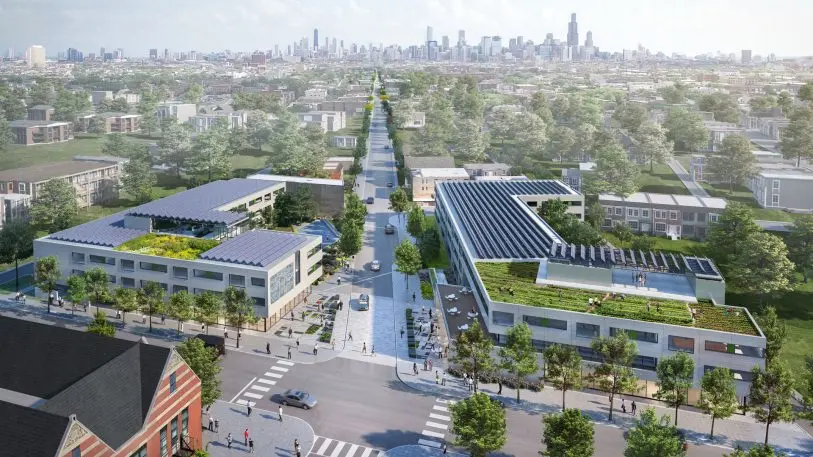
Garfield Green
On two vacant lots in Chicago’s Garfield Park neighborhood, a new net-zero carbon housing development is designed to run on renewable energy, grow food on the roof, and process stormwater onsite. The ultra-efficient buildings, designed to “passive house” standards, would be built in a local modular factory.
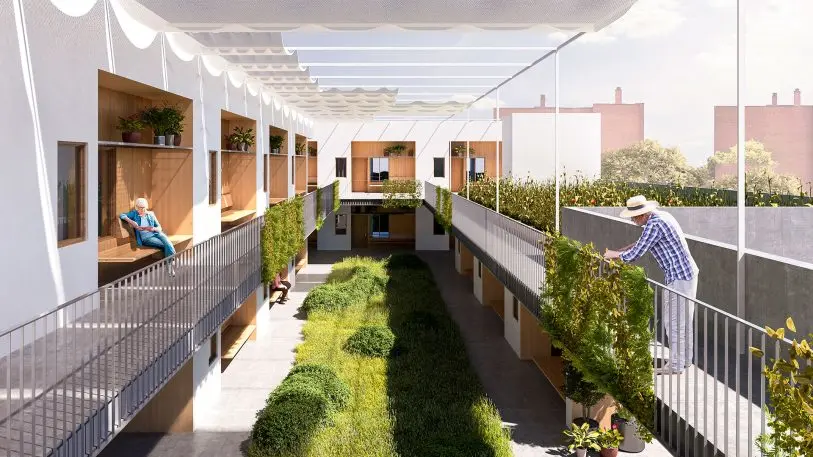
Mercado Habitado II
An unused market building in Madrid would be renovated with recycled materials and certified wood and would produce its own power through solar panels on the roof and walls. Inside the market, the community would have access to local, organic produce and workshops about climate change.
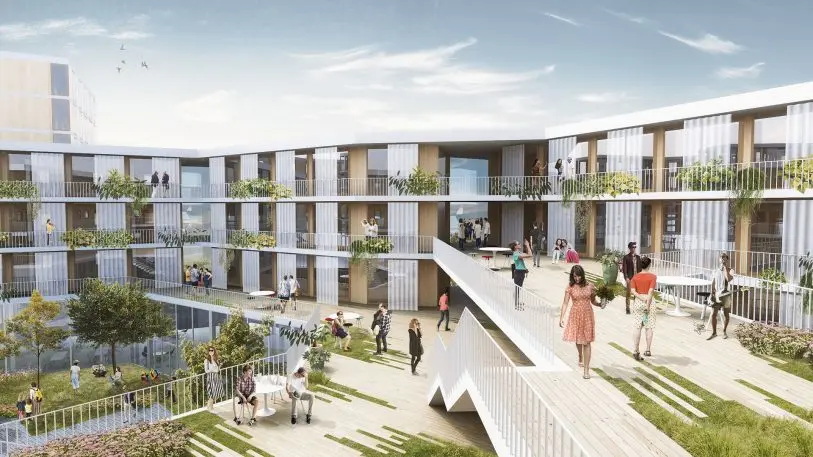
Tercer Sonido
On vacant land in a part of Madrid sandwiched between an industrial and residential area, a new development would include student housing, rehearsal spaces and an auditorium for musicians, an organic store, and space for urban farming. Nearly half of the surface area would be devoted to green space.
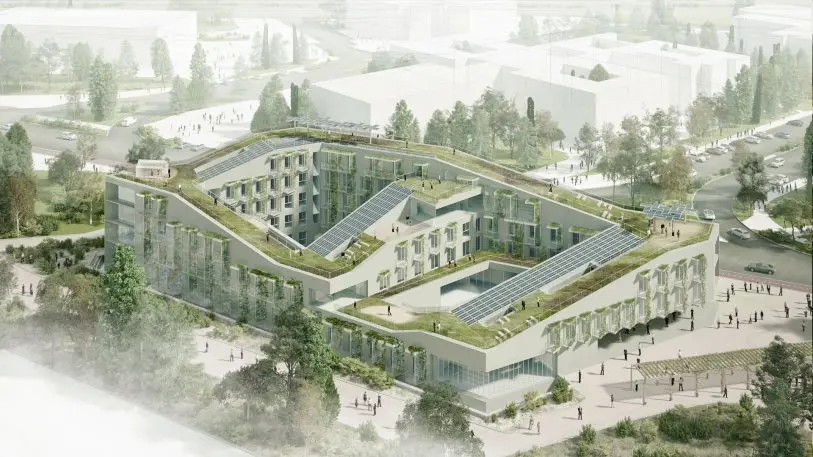
Campus for Living Cities
A new zero-emissions student hub at the Polytechnic University of Madrid–with housing, sport and art facilities, and a lab for sustainability research projects–would use a passive design to shrink energy use. Outside, the walls would be covered in holes to create habitats for plants and animals.
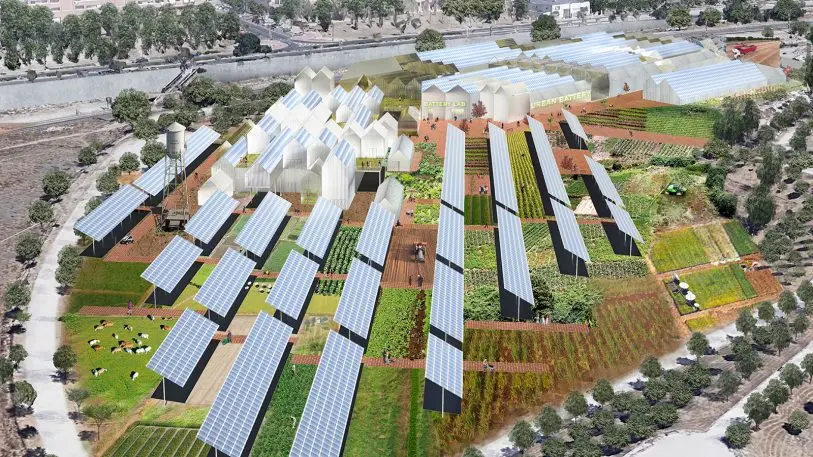
Urban Battery
A new factory in Madrid would manufacture biodegradable zinc-air batteries and run on energy from a solar farm on the property, creating more than 100 local jobs. Regenerative agriculture techniques would rehabilitate the soil, and an onsite “Compostlab” would produce compost from local waste.
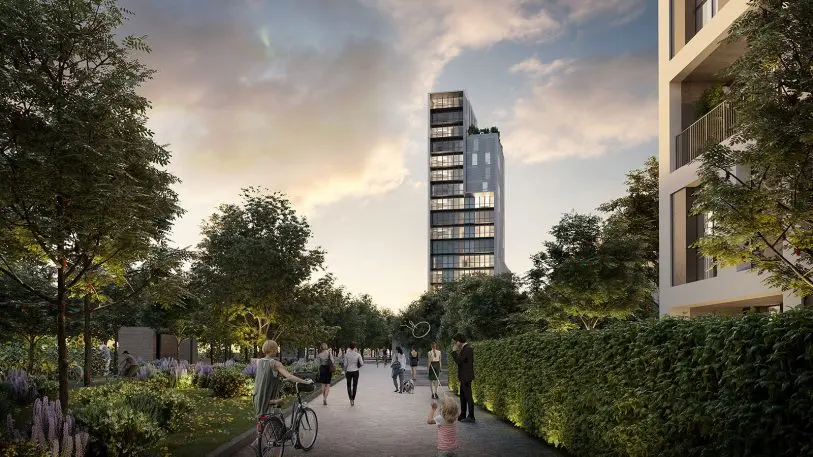
L’Innesto
At a former freight terminal site in Milan, a new social housing project would be the first in Italy to be carbon neutral. The design limits space for personal cars and has extra space for bike parking, charging stations for electric cars, and a neighborhood car-sharing scheme. The buildings would be powered by onsite renewable energy and connected to district heating.
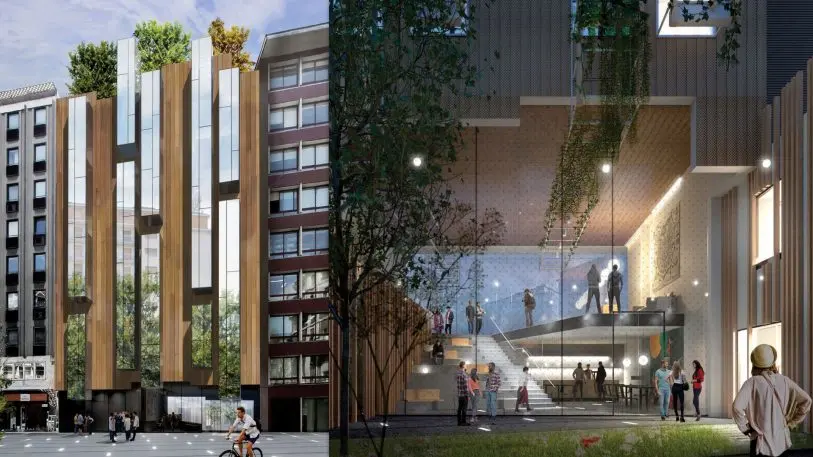
Co-inventing Doria
On a parking lot near the central train station in Milan, a new carbon-neutral hostel would have solar panels on the roof, a green courtyard, and a “breathing wall” that can recover energy and filter the air. The project would also redesign the street to make it more pedestrian-friendly and add green space.
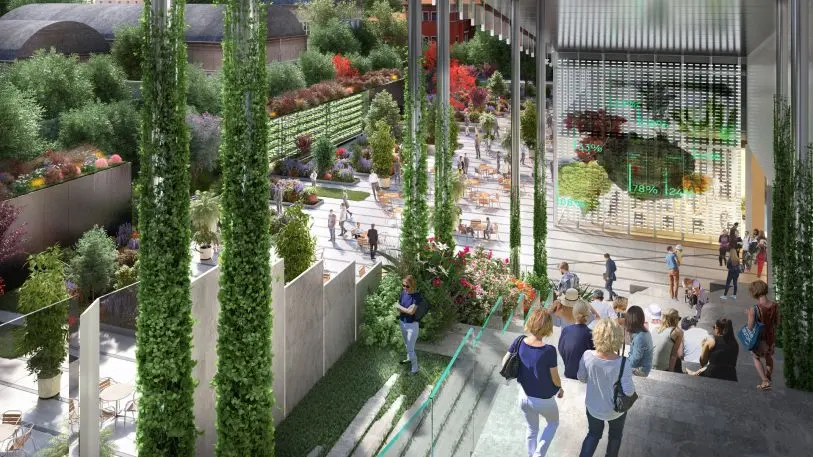
Vitae
A vacant lot in Milan would be transformed into a research and education building with solar power, geothermal heat, and a plant-covered path that leads to a rooftop vineyard and vegetable gardens.
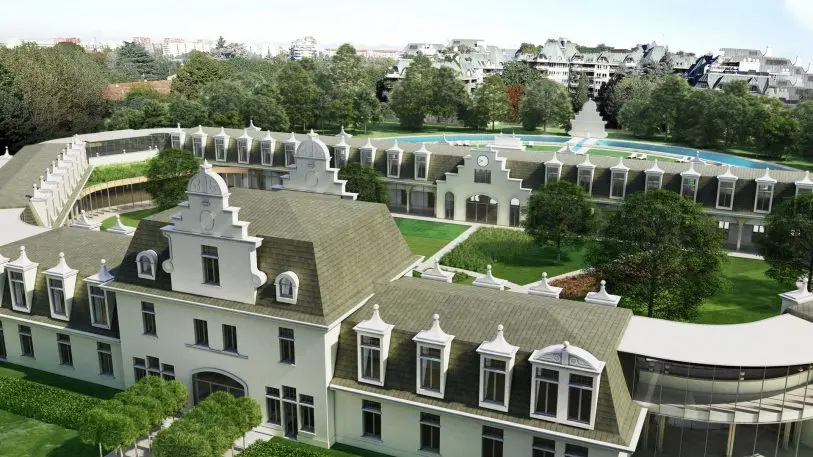
Teatro Delle Terme
These historic stables in Milan are now unused, but would be converted into an urban park that makes use of natural hot springs in the area. The buildings would use solar panels, solar thermal panels that heat water, and would be connected to the neighborhood’s district heating network.
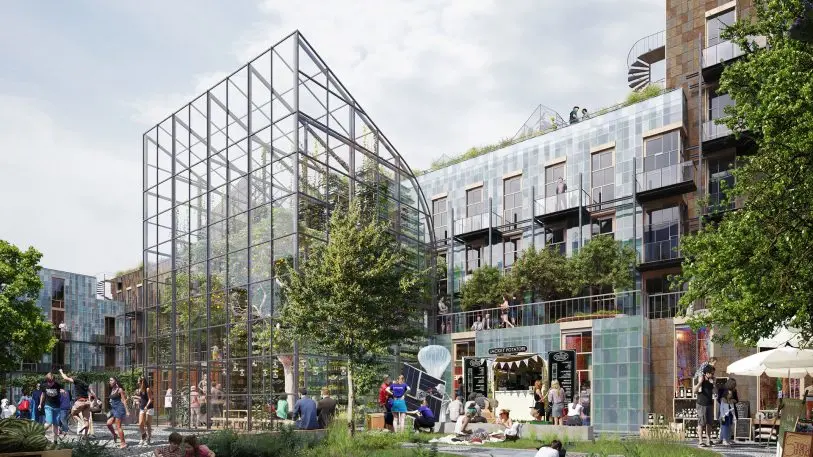
Recipe for Future Living
On vacant land in an industrial area in Oslo, new housing and commercial space would be carbon neutral. Building materials would be recycled from the construction industry, reducing 90% of emissions. Half of the site would be used for green space, including greenhouses. The site would also host a startup accelerator for climate entrepreneurs.
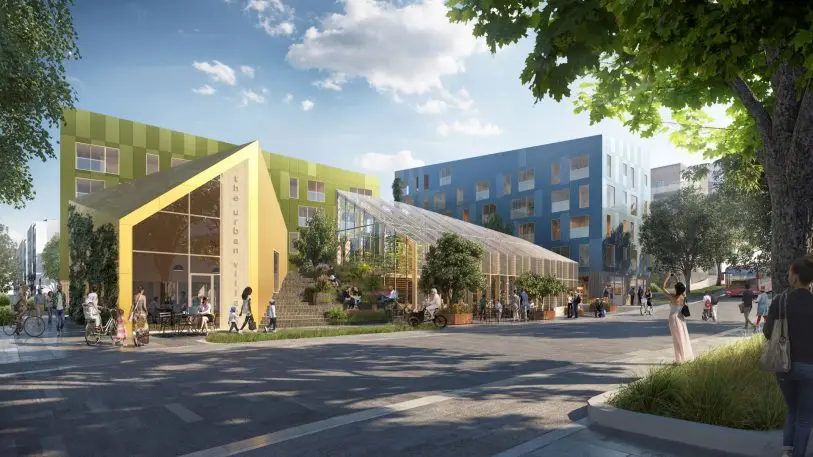
The Urban Village
In a parking lot in a suburban neighborhood on the outskirts of Oslo, a new community would produce more energy than it consumes, with solar panels covering façades and rooftops on buildings designed to passive house standards. The development would be car-free.
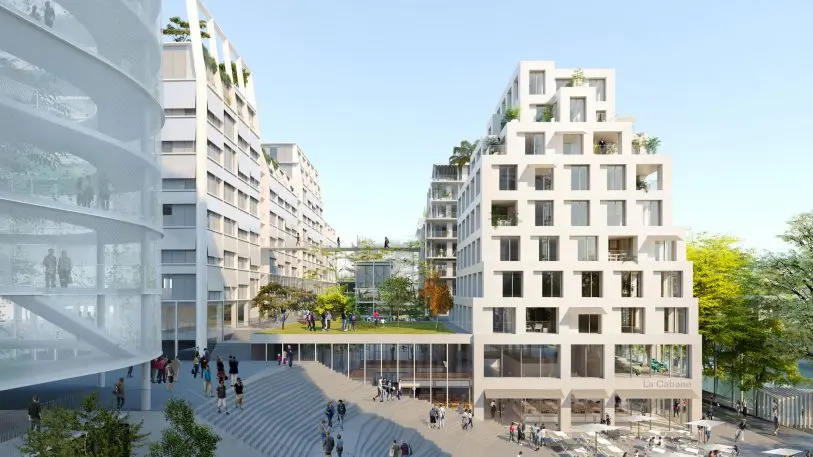
MKNO
In the Paris suburb of Bobigny, a new development would include housing, offices, shops, and community spaces like a library and a daycare, with the building heated with geothermal energy and waste heat from nearby sites. With more than 1,000 bike parking spaces and shared bikes, it aims to encourage residents not to drive.
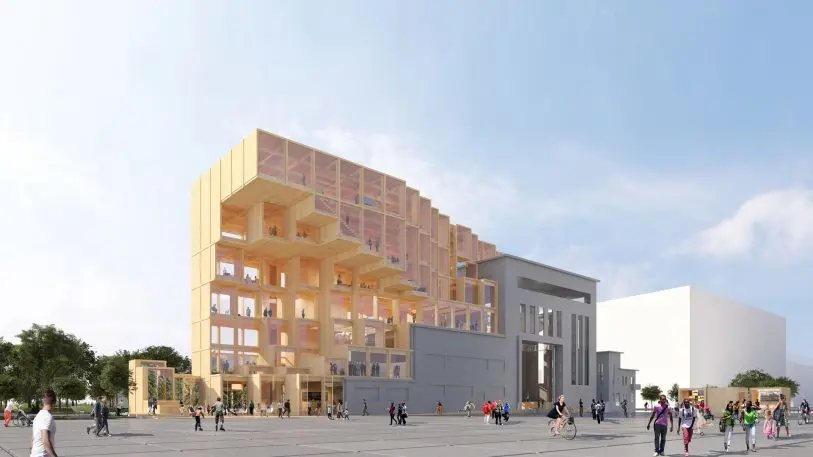
Odyssee Pleyel
In the northern Paris suburb of Saint-Denis, an old industrial building would get a zero-carbon retrofit with solar panels, solar thermal cells, and zinc-air batteries. Inside, an innovation studio would give startups and nonprofits space to work on sustainability projects.
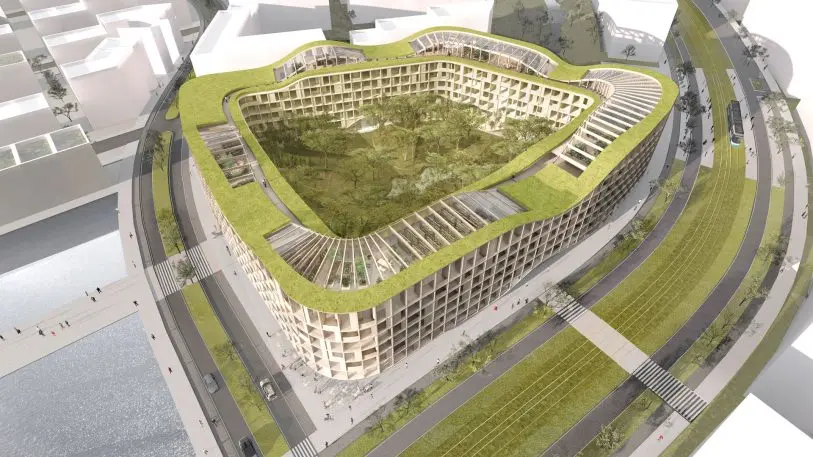
Lifandi Landslag
On a polluted industrial site near a planned train station in Reykjavík, a new mixed-use building would be the largest wooden building in Iceland. The building (called Lifandi Landslag, or Living Landscape) forms a ring around a new park filled with native plants, and the roof is also covered in greenery. The site would promote walking and biking, and half of the parking spaces would be dedicated to electric cars.
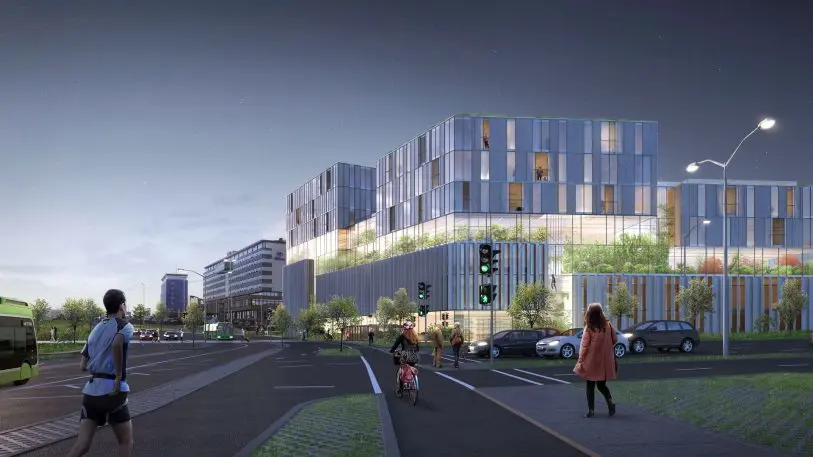
Fabric
On an unused site in central Reykjavík, a new ultra-low-energy building would combine coworking and coliving along with public space and stores. Geothermal energy would heat the building, which would have a green roof, green walls, and greenhouses.
Recognize your brand’s excellence by applying to this year’s Brands That Matter Awards before the early-rate deadline, May 3.
